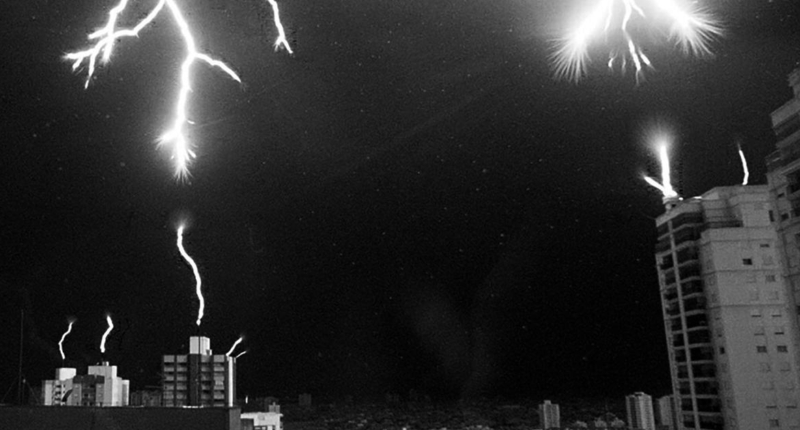Lightning rods were invented by Benjamin Franklin in the 18th century to protect assets from lightning strikes. The effectiveness of a lightning protection system depends on its efficiency to intercept the downcoming lightning leader, which is usually done by emitting an upward connecting leader (UCL). A recent study by Brazilian scientists captured stunning images of lightning being attracted to an upward discharge from a building, revealing elusive phenomenon that has long protected humans and assets from lightning strikes. The study also revealed that the upward discharge was not only created by the lightning rods placed on buildings but also by different corners of the building, and any person standing in an open area can launch an upward connecting discharge from their head or shoulders and could be injured. It is crucial to understand the importance of lightning rods in protecting infrastructure and human lives from lightning strikes and for individuals to take precautions when in open areas during thunderstorms.
Brazilian Scientists Record Never-Before-Seen Lightning Phenomenon
Scientists in Brazil have captured one of the most stunning images ever recorded, showing lightning being attracted to an upward discharge from a building. The discharge was beamed less than a millisecond before the lightning bolt touched the rod, revealing an elusive phenomenon that has long protected humans and assets from lightning strikes.
The research is aimed at understanding how lightning rods work to dispel lightning discharge from the sky, saving key infrastructure and human lives. The study could further enhance the protection system used in high-rise buildings to prevent them from being hit by lightning.
The close observation of the event has now revealed details of the lightning attachment process to residential buildings in highly populated areas. Researchers have identified that the effectiveness of a lightning protection system depends on its efficiency to intercept the downcoming lightning leader, which is usually done by emitting an upward connecting leader (UCL).
Researchers captured the upward discharge and the attracted downward lightning in Sao Jose dos Campos city, which is northeast of Sao Paulo in Brazil. They observed and recorded 31 of these upward discharges in the minute moments before the lightning strike. The team used a high-speed camera that could capture 40,000 images in a second and recorded slow-motion videos.
The details helped them understand what happens in the moments before the charge from the lightning rod on the building meets the charge coming from the lightning.
The study published in Geophysical Research Letters indicates that the observations indicated that the space stems hamper the leader propagation, making the upward connecting leader intercept a different downward branch, which was originally more distant from the striking point.
Researchers found that the upward discharge moved in an almost straight line with no branching and had a uniform corona brush. However, the downward discharge from the lightning bolt had substantial branching and numerous filaments. They also identified space stems, which plays a key role in the stepped propagation of lightning bolt.
This research provides valuable insights into the process of lightning attachment to buildings and will contribute to developing more efficient lightning protection systems. It also highlights the importance of understanding how lightning rods work to protect lives and infrastructure from the dangers of lightning strikes.
Understanding the Importance of Lightning Rods
Lightning rods were invented by Benjamin Franklin in the 18th century and have been protecting assets ever since. However, events that initiate an upward leader but fail to make contact with the downward leader can cause damage to equipment and even injure people.
A study revealed that the upward discharge was not only being created by the lightning rods placed on the buildings but also by different corners of the building. Researchers said that any person standing in an open area can also launch an upward connecting discharge from their head or shoulders and could be injured.
It is crucial to understand the importance of lightning rods in protecting infrastructure and human lives from lightning strikes. In addition, individuals should take precautions when in open areas during thunderstorms to avoid potential injuries.
Don’t miss interesting posts on Famousbio









